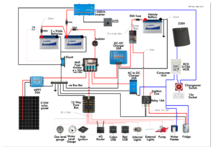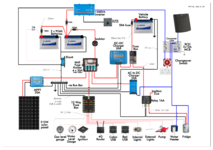Not 'replace' - I have a Victron Multiplus which is also a charger, and I'd assumed all the Victron inverters did this. However, turns out that the OP is re-using an old inverterCan I ask you why you would think an invertor can replace a Ac-Dc charger?
Not sure I said it wasnt 'good' - did I? On mobile at the moment. However, the charger on the multiplus only has one Lithium profile, which is for Victron's battery. Not good. But...Victron gear is used by some of the best installers across the globe both professionally and self builders , what basis do you use to say it’s not good and only supports their own batteries?
Yes, it does charge my cheap Chinese battery, and hasn't blown anything up yet.I have Victron gear and it works with my non Victron batteries.
The problem with Victron kit is that people buy it for the name. Seeing a wiring diagram with 3 separate Victron boxes on it is a red flag, to me anyway.




